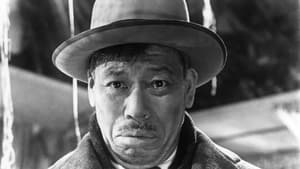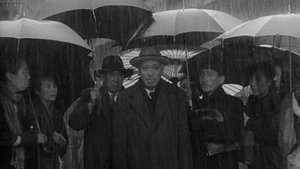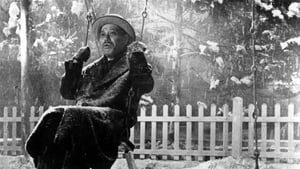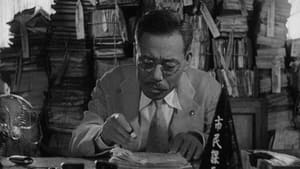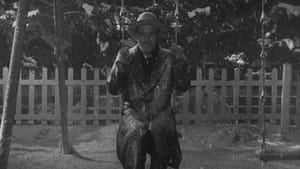Video Sources 0 Views
- Watch trailer
- Ikiru 1952 Colorized

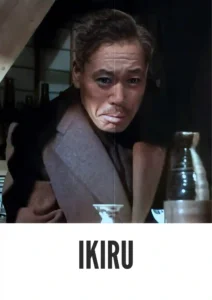
Download Ikiru (1952) Colorized HD | Takashi Shimura | Existential Drama Masterpiece
Synopsis
Table of Contents
Toggle
Delve into the poignant world of Akira Kurosawa’s Ikiru, a profoundly moving existential drama from 1952, now beautifully colorized to enhance its emotional depth and visual storytelling. This film, featuring the legendary Takashi Shimura, explores the life-affirming journey of a bureaucrat facing his own mortality. Perfect for cinephiles seeking films that provoke thought and touch the heart, this HD download brings a timeless classic to life with renewed vibrancy. Discover why Ikiru which translates to To Live is a cinematic treasure, inviting viewers to contemplate the essence of existence.
Ikiru tells the story of Kanji Watanabe (Takashi Shimura), a long-serving bureaucrat in a municipal office who is diagnosed with terminal stomach cancer. For decades, Watanabe has passively shuffled papers, lost in the monotony of his job, but the diagnosis forces him to confront the emptiness of his life. Initially, he seeks solace in fleeting pleasures, such as drinking and nightlife, but finds no lasting satisfaction.
Inspired by a chance encounter with a young woman who radiates a zest for life, Watanabe decides to dedicate his remaining days to making a meaningful contribution to his community. He becomes determined to push through the bureaucratic red tape and build a small park for the children in his neighborhood. His transformation from a listless, insignificant cog in the machine to a man driven by purpose forms the heart of the film. Ikiru is a powerful meditation on life, death, and the importance of finding meaning in one’s existence, even in the face of overwhelming adversity.
The film boasts a stellar cast, led by Takashi Shimura’s unforgettable performance:
-
Takashi Shimura as Kanji Watanabe
-
Shinichi Himori as The Narrator
-
Haruo Tanaka as Vice Mayor
-
Minoru Chiaki as Kimura
-
Miki Odagiri as Toyo Odagiri
Ikiru transcends simple categorization, but it primarily falls into the genre of existential drama. Its exploration of profound themes such as mortality, purpose, and the human condition elevates it beyond typical dramatic narratives. The film also incorporates elements of social commentary, offering a critique of bureaucratic inefficiency and societal apathy.
Released in 1952, Ikiru reflects the socio-economic landscape of post-World War II Japan. The nation was grappling with rebuilding, both physically and spiritually, and Kurosawa’s film captured the prevailing sense of uncertainty and the search for meaning in a rapidly changing world. Ikiru is considered one of Kurosawa’s most personal and deeply felt works, showcasing his humanist perspective and his commitment to exploring the complexities of the human experience. The film solidified Kurosawa’s reputation as one of the world’s most important and influential filmmakers.
This colorized version of Ikiru has been meticulously crafted to enhance the viewing experience while respecting the film’s original artistic integrity. The colorization process was undertaken with careful consideration of the film’s themes and emotional tone, ensuring that the added color serves to amplify, rather than detract from, the story’s impact. The specific techniques used involved advanced digital restoration and color grading, with a focus on creating a natural and believable color palette that complements Kurosawa’s visual style. The result is a visually stunning version of Ikiru that brings new life to the film’s iconic scenes and characters, inviting a new generation of viewers to discover its timeless message.
-
: Akira Kurosawa
-
: Akira Kurosawa, Shinobu Hashimoto, Hideo Oguni
-
: Asakazu Nakai
-
: Kôichi Kanekawa
-
: Toho Company
-
: Toho Company
-
: 143 minutes
-
: MP4
-
: HD (1080p)
-
: Compatible with most devices, including smartphones, tablets, computers, and smart TVs.
Ikiru (1952) is widely regarded as one of Akira Kurosawa’s masterpieces and one of the greatest films ever made. Its powerful storytelling, masterful direction, and unforgettable performance by Takashi Shimura have earned it countless accolades and a lasting place in cinematic history. Critics have praised Ikiru for its profound exploration of universal themes and its ability to resonate with audiences across cultures and generations. The film continues to be studied and admired for its artistic merit and its enduring relevance to the human condition.
-
: What is Ikiru about?
-
A: Ikiru is a drama about a bureaucrat who, upon learning he has terminal cancer, seeks to find meaning in his life by building a park for children.
-
-
: Is Ikiru (1952) a well-known Kurosawa film?
-
A: Yes, Ikiru is considered one of Akira Kurosawa’s most important and critically acclaimed works.
-
-
: Is this version of Ikiru colorized?
-
A: Yes, this version has been professionally colorized to enhance the viewing experience.
-
-
: What makes Ikiru so highly regarded?
-
A: Ikiru is praised for its powerful storytelling, profound themes, and Takashi Shimura’s exceptional performance.
-
-
: What is the download format?
-
A: The download format is MP4, which is compatible with most devices.
-
-
: What resolution is the download?
-
A: The resolution is HD (1080p), providing a high-quality viewing experience.
-
Experience Ikiru Today!
